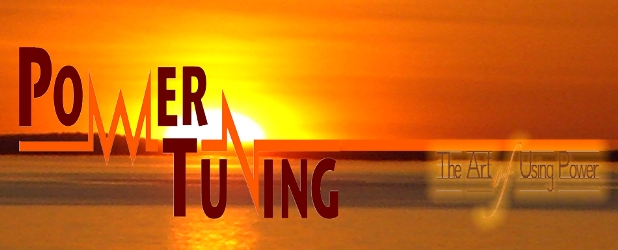Lighting Technologies & Controls: Solutions - WELL Services & Solutions - Lighting Services
WELL Standards & Certification - Power Tuning Lighting Design & Technical Support
LIHGTING DESIGN & TECHNICAL SUPPORT |
 |
|---|
| Lighting Features of v1 | Design & Technical Support By Power Tuning |
|---|---|
| VISUAL LIGHTING DESIGN | 1 - Lighting layout design & Lux calculation reports, on-site measurement reports and drawings layout luxlevels indicating special areas lux levels acheived. 2- Uniformity reports and drawings layout luminance levels for visual balance, and verification of brightness management strategies. |
| CIRCADIAN LIGHTING DESIGN | 3- Lighting simulation with / without daylighting, with calculations reports for Equivalent Melanopic Lux (EML); based on computerized calculations and on-site measurement. |
| ELECTRIC LIGHT GLARE CONTROL | 4- Choosing the appropriate lighting fixtures and calculating its shielding angle (α). 5- Luminance (cd/m2) & Glare (UGR) calculations through accurate computerized simulations. |
| SOLAR GLARE CONTROL | 6- Daylighting simulation using shadings, reflectors or special glass parameters to view their effect on the interiors, with glare calculations. |
| LOW-GLARE WORKSTATION DESIGN | 7- Choosing the appropriate lighting fixture and indicating its luminous curve aiming rays in vertical plan section for the workstation. |
| COLOR QUALITY | 8- Report of average the Colour Rendering Index (CRI) of each space. |
| SURFACE DESIGN | 9- Lighting simulation report indicating the reflectance values of ceiling, walls & furniture as per actual values. |
| AUTOMATED SHADING AND DIMMING CONTROLS | 10- Sensors choosing and layout design. 11- Design automated control system with occupancy and Lux leveling sensors. |
| RIGHT TO LIGHT | ------ |
| DAYLIGHT MODELING | 12- Daylight simulation calculations for spaces and floors, and report of Spatial Daylight Autonomy (sDA) & Annual Sun Exposure (ASE) of all areas. |
| DAYLIGHTING FENESTRATION | ------ |
| LIGHT AT NIGHT | 13- Choosing of fixtures and design of Nightlight Safe Pathes with sensor controlled. 14- Design, implementation and adjusting of the automation system for night mode controlling shades, lighting systems, etc. And providing a print out report for these functions. |
| CIRCADIAN EMULATION | 15- Design, implementation and adjusting of the circadian lighting system, with EML calculations as per service no.3. |
| Lighting Features of v2 | Design & Technical Support By Power Tuning |
|---|---|
| LIGHT EXPOSURE & EDUCATION | 1 - Daylight simulation calculations for spaces, and report of Spatial Daylight Autonomy (sDA) of all areas. 2- Educational presentations and training on Lighting & Health, and providing the training file including objectives and materials. |
| VISUAL LIGHTING DESIGN | 3- Lighting layout design according to the specified guidelines & Lux calculation reports, on-site measurement reports and drawings layout luxlevels indicating tasks and age ranging majority of each area. |
| CIRCADIAN LIGHTING DESIGN | 4- Lighting simulation with / without daylighting - for the specified day-hours, with calculations reports for Equivalent Melanopic Lux (EML); based on computerized calculations and on-site measurement. |
| GLARE CONTROL | 5- Daylighting simulation and calculations of the Annual Sunlight Exposure (ASE) with the using shades, windows reflectors or special glass parameters to view their effect on the interiors, with glare calculations. 6- Design, implementation and adjusting of the automation system with weekly scheduling functions for controlling shades, lighting systems, etc. And providing a print out report for these functions. 7- Choosing the appropriate lighting fixtures and calculating its shielding angle (α). 8- Luminance (cd/m2) & Glare (UGR) calculations through accurate computerized simulations. |
| ENHANCED DAYLIGHT ACCESS | - Same as Service (1) |
| VISUAL BALANCE | 9- Uniformity reports and drawings layout luminance levels for visual balance, and verification of brightness management strategies for all surfaces and between areas. 10- Adjusting of the lighting control or automation system dimming strategies for the smooth transition as specified, and providing a print out report for these functions. |
| ELECTRIC LIGHT QUALITY | 11- Report of average the Colour Rendering Index (CRI) or R1-R9 or TM30 - as per the available data from the lighting fixtures datasheets of the manufacturer of each space. 12- Choosing and inspection of drivers used to acheive the required performance for of acceptable flickering. |
| OCCUPANT CONTROL OF LIGHTING ENVIRONMENTS | 13- Design, implementation and adjusting of the circadian lighting system, integrated with lighting control system (Service No. 6), with needed occupants assignments for manual or overrides, and providing a print out report for these functions. 14- Choosing of scalable lighting layouts, systems and controls, with reports of how can we double the lighting levels as per figures designed in service no.3. |
Check our Lighting Solutions dedicated for WELL Certificates
For more technical information of systems and applications, click here to contact us


